巻号一覧

20 巻 (2000)
- 2 号 p. 65-
- 1 号 p. 1-
20 巻, 1 号
選択された号の論文の4件中1~4を表示しています
- |<
- <
- 1
- >
- >|
-
1980年代以降の社会的要請に関連して井谷 惠子2000 年 20 巻 1 号 p. 1-17
発行日: 2000/05/31
公開日: 2010/08/10
ジャーナル フリーThe status of the fitness goals in physical education in the USA.: with reference to the requests by society in general since the 1980's.
Physical education professionals have become aware the role of national fitness and have tended to regard the fitness goals as more important in the USA since the 1980's. The purpose of this study was to discuss the status of the fitness goals in physical education by looking at the social factors which influenced their status, the Standards for Physical Education, and reviews by various reserchers. The results were as follows;
1. Educational reforms since the 1980's have given rise to the tendency of adding importance to academic subjects and have brought the decline of the level of physical education. “Physical” is recognized as the identity of physical education and increased attention is again being focused on this word in order to resolve the crisis.
2. The issues of health and fitness have been recognized as serious, nation wide problems. Several Surgoen General reports and recomendations by related academies called for an increased positive role of physical education.
3. The National Standards for Physical Education published by NASPE in 1995 strongly focused on fitness standards. Psycho-moter, cognitive, physical, affective and social development have been traditional goals of physical education, with the addition of physical activity, itself now being realized as a primary goal.
4. Various reserchers regard fitness as important. This change in understanding about the needs of fitness and of social changes have placed a new level of responsiblity on the role of fitness. Further more, various reserchers suggested fitness programs have changed their emphasis from high level fitness training to improvement in attitudes about the needs of fitness, knowledge base and the requirement of independent ongoing physical activities related to fitness throughout our lifetime.抄録全体を表示PDF形式でダウンロード (2664K) -
吉野 聡, 元塚 敏彦, 岡沢 祥訓, 林 恒明, 高橋 健夫2000 年 20 巻 1 号 p. 19-30
発行日: 2000/05/31
公開日: 2010/08/10
ジャーナル フリーThe purpose of the paper is to examine the effectiveness of teacher's initiative in physical education classes. The questionnaire of 2 categories (‘determination of learning goal and content’ ‘determination of learning method’) was prepared for making clear teacher's initiative and applied to teachers who have physical education classes from 3rd to 6th grade (278 classes). And formative evaluation by Takahashi et al (1994) was applied as learning product variable.
Main findings are as follows.
1) ‘Determination of learning goal and content’ was divided into 4 types physical education classes. As a result of the investigation, the subjects were divided into ‘teacher-centered’ type 33.5% ‘task selected’ type 14.7% ‘task created’ type 34.2% and ‘child-centered’ type 17.6%.
2) ‘Determination’ of learning methods' was divided into 4 types of physical education classes. As a result of the investigation, the subjects were divided into ‘direct teaching’ type 16.5% ‘direct orientated’ type 32.2% ‘indirect orientated’ type 36.6% and ‘spontaneous learning’ type 14.7%.
3) The relations between ‘learning goal and content’ and formative evaluation were analyzed. The results revealed that ‘teacher-centered’ type of physical education classes were evaluated lowest by pupils. On the contrary, physical education classes which evaluated highest were ‘task selected’ type.
4) The relations between ‘learning goal and content’ an formative evaluation were analyzed. The results revealed that ‘direct teaching’ type of physical education classes were evaluated lowest by pupils. On the contrary, physical education classes which evaluated highest were ‘indirect orientated’ type. As for ‘total’ ‘way of learning’ ‘cooperation’ in the formative evaluation, there are significant relationships between ‘learning goal and content’ and them.抄録全体を表示PDF形式でダウンロード (1513K) -
高田 俊也, 岡沢 祥訓, 高橋 健夫2000 年 20 巻 1 号 p. 31-40
発行日: 2000/05/31
公開日: 2010/08/10
ジャーナル フリーThe purpose of this study was to develop the scales for physical education class evaluation and the diagnostic standards of physical education at the whole school stages.
The subjects consisted of 3, 044 elementary school children, 2, 172 junior high school students, 3, 023 high school students and 1, 325 university students. The scales which contained 20 items on the instructional objectives included affective, psychomotor, cognitive and social behavior domains. According to D. Siedentop, B. Crum and T. Takahashi, these were considered to be the major objectives. Moreover these items were consistent with previous research (Takada et al., 1999). Factor analysis with principal factor solution and varimax rotation, and a reliability analysis with coefficient alpha technique were performed.
As a result, the evaluation scales covering all school stages for physical education class consisted from four common factors that were the same structure reported by the precedence studies. Reliability of the scales was statistically confirmed and the diagnosis standards of each factor and synthesis factor were made at the all school stages.抄録全体を表示PDF形式でダウンロード (1378K) -
教師の指導性の異なる2つのサッカーの授業分析を通して細越 淳二, 高橋 健夫, 吉野 聡2000 年 20 巻 1 号 p. 41-58
発行日: 2000/05/31
公開日: 2010/08/10
ジャーナル フリー本研究では, 教師の指導性の異なる2つのサッカー授業をとりあげ, それらをプログラム・プロセス・プロダクトの視点から総合的に観察分析し, 指導計画段階, 授業過程のそれぞれにおける教師の指導性の発揮のしかたの違いが, 子どもの授業評価にどのように結びつくのかについて, 事例的に検討した.
A単元は, 研究者と実践者が合議のうえ計画・立案した. 具体的には, 段階的に学習を深めていくことのできる「ステップ型」の学習過程を適用した. またタスクゲームには, ゲームパフォーマンスを高めることをねらった, 2つの異なったゲームが発展的に位置づけられた. 授業過程での教師の指導性の発揮のしかたとして, 教師は毎時間技術的・戦術的な課題を子どもに提示し, 常に明確な課題意識をもたせる働きかけをするように計画した. また積極的なフィードバックを営み, 子どもたちの学習を活性化させるよう企図した.
B単元には一切の介入を行わず, 担当教師が指導計画を作成した. そこでは, 学校現場で広く行われている「ステージ型」の学習過程が適用され, 子どもの自発的・自主的学習が目指された. また, 授業過程における教師のフィードバックについては, 普段通りに行うこととした. 授業はゲーム中心で展開され, 単元を通して同一のタスクゲームが適用された.
このように, 指導計画段階では, B単元よりもA単元の方が, 子どもの学習を明確に導くような, 教師の指導性の強い指導計画が設定された.
授業過程の行動的特徴は, 学習者行動については, 「課題従事・非従事行動」「集団的・情意的行動」の観点から, 教師の指導行動については「授業場面の記録」「課題提示のしかた」「教師のフィードバック」の観点から観察記録した. くわえて毎時間授業終了直後に, 子どもによる形成的授業評価を行い, ここから学習成果を判断した.
授業過程の分析結果をみると, 学習者の行動については, どちらの単元の子どもたちも積極的かつ肯定的な雰囲気のもとで活動しており, 大きな差異はみられなかった. 授業場面の記録については, どちらの単元も, 授業の規律が確立され, 豊富な運動学習時間が確保されていた. しかしA単元の方が学習指導にあてた時間量が多く, 子どもの学習を方向づけようとする明確な教師の指導性をうかがうことができた. 授業はじめとおわりの学習指導場面では, A教師は子どもたちに具体的な課題を提示して課題意識をもたせようとしていた. これに対してB教師は, 課題提示をほとんど行っていなかった. 教師のフィードバックについてみると, どちらの教師も積極的に子どもたちに働きかけていたが, A教師の方は単元や各授業のねらいの達成に向けた, 焦点化されたフィードバックを一貫して与えていた. 一方B教師は, 子どもの状況に合わせた状況対応的なフィードバックを与えることが多かった.
子どもによる形成的授業評価をみると, どちらの単元も, 子どもに高く評価されていたけれども, A単元は, 単元の進行に伴ってどの次元も評価が向上していたのに対し, B単元は「意欲・関心」次元の評価が単元を通して高かったにもかかわらず, その他の次元の評価が横這いのままであった.
このような授業評価の差異をもたらした要因として考えられるのが, まず教材の配列の違いであった. B単元では, 単元を通して同一のタスクゲームを位置づけたが, A単元では単元の前半と後半でタスクゲームを発展させた. また毎時間授業のはじめにドリルゲームを位置づけ, 個人的技能の向上も図った. これらのことが, 学習活動に課題性をもたせるとともに, 子どもの学習意欲を喚起し, 授業評価に肯定的な影響を与えたと思われる.
また, 教師の具体的な課題提示やフィードバックの頻度・言語内容も, 授業評価の差異を生み出した要因として考えられる. A教師は学習指導場面においても, 課題の説明や提示を積極的に行っていた. また目標達成に向けた, 焦点化されたフィードバックを数多く与えていた. このことは, 子どもの学習目標や学習課題を具体的で明確なものにし, そのことが目的的な学習活動につながり, より大きな達成感を生み出したものと考えられる.
このように, 本研究の結果から, 教師がより大きな学習成果を生み出すことを意図し, 授業の計画・過程の各段階を通して一貫性のある指導性を発揮して, 子どもたちの学習を方向づけた方が, 授業評価が高まるという示唆を得ることができた. 各種目や各発達段階に相応しい教師の指導性について, さらに考察を深めていく必要があろう.
また, プログラム・プロセス・プロダクト相互の関係について考察することから, 授業過程での行動的事実と学習成果が, 指導計画に導かれて生起していたことが推察できた. このことから, 本研究において適用したプログラム・プロセス・プロダクト研究システムは, 教師の立案する指導計画がどのように授業過程に反映抄録全体を表示PDF形式でダウンロード (2473K)
- |<
- <
- 1
- >
- >|